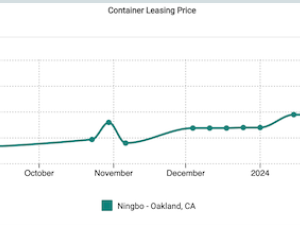Horizon Lines held shore side safety drills on May 26 in the Port of San Juan. Said Janet Nieves, Director of Safety and Security in Puerto Rico: 'The drills went very well. We created a scenario that simulated a hurricane landfall. Our crane department secured the equipment to withstand a Category 5 (150-mile-per-hour) hurricane, providing protection to our people, our equipment and our port infrastructure. The goal is to mitigate the impact of a major disaster.' We pursue this objective by ensuring our personnel and facilities are prepared.'
In the Jacksonville/ San Juan trade, hurricanes are a two-way threat that can wreak havoc on busy ports and harbors. Horizon Lines' standard operating plan establishes a clear chain of command.' Every employee is aware of their responsibilities before, during, and after storms.
Since 1995, hurricane activity has been particularly heavy. 2010 continued the trend. In 2010, a total of 19 named storms formed, which tied for the third highest season on record. Of those 19 storms, 12 became hurricanes, which tied for second highest season on record. Storms developing in 2011 will be the result of record warm Atlantic water and will be energized by La Ni'a, an ocean-atmospheric phenomenon.
The National Oceanic and Atmospheric Administration (NOAA) forecasters are predicting an active season for 2011, a total of 15 named tropical storms - eight of which will attain hurricane status and three of which will attain major hurricane status (Category 3 'or higher).
Horizon Lines has the plans, people and equipment in place ' on shore and at sea ' to ensure the safe and timely delivery of cargo. The company has weathered more than 53 Atlantic Hurricane Seasons, which makes Horizon Lines an authority on hurricane preparedness.
Since 2005, Horizon Lines has maintained an on-time arrival rate of 95% during Hurricane season'measured to the minute.' How does a ship three times the length of football field and loaded with 12,000 of tons cargo successfully complete voyages to and from Puerto Rico during inclement weather? It starts with Horizon Lines' ship captains, who have an average of more than 35 years experience at sea.
To assist these seasoned mariners, Horizon utilizes data from NOAA, which provides weather observer training, observation encoding software, barometer calibration, and weather observing tools. Horizon also uses Applied Weather Technology's 'Bon Voyage' data service to route vessels around heavy weather for safety, on-time arrival, and fuel economy.'This technology provides expanded forecasting information for key transit factors, such as currents and the potential for severe rolling of vessels.
When inclement weather is detected, ship masters set their course to avoid the storm.' Horizon Lines' vessels have the speed and maneuverability to endure storms that others may not.' For example, ocean-going tugs can be forced to release their tow lines to the barge, leaving cargo to the mercy of the weather.
'At the end of the day'and the beginning of the next'it all comes down to a commitment to our associates, our customers and the citizens relying on goods moving between the mainland and Puerto Rico,' according to Bill Hamlin, Horizon's Senior Vice President, Operations. 'There is no such thing as being over-prepared for these weather episodes, which are out of our control.'





